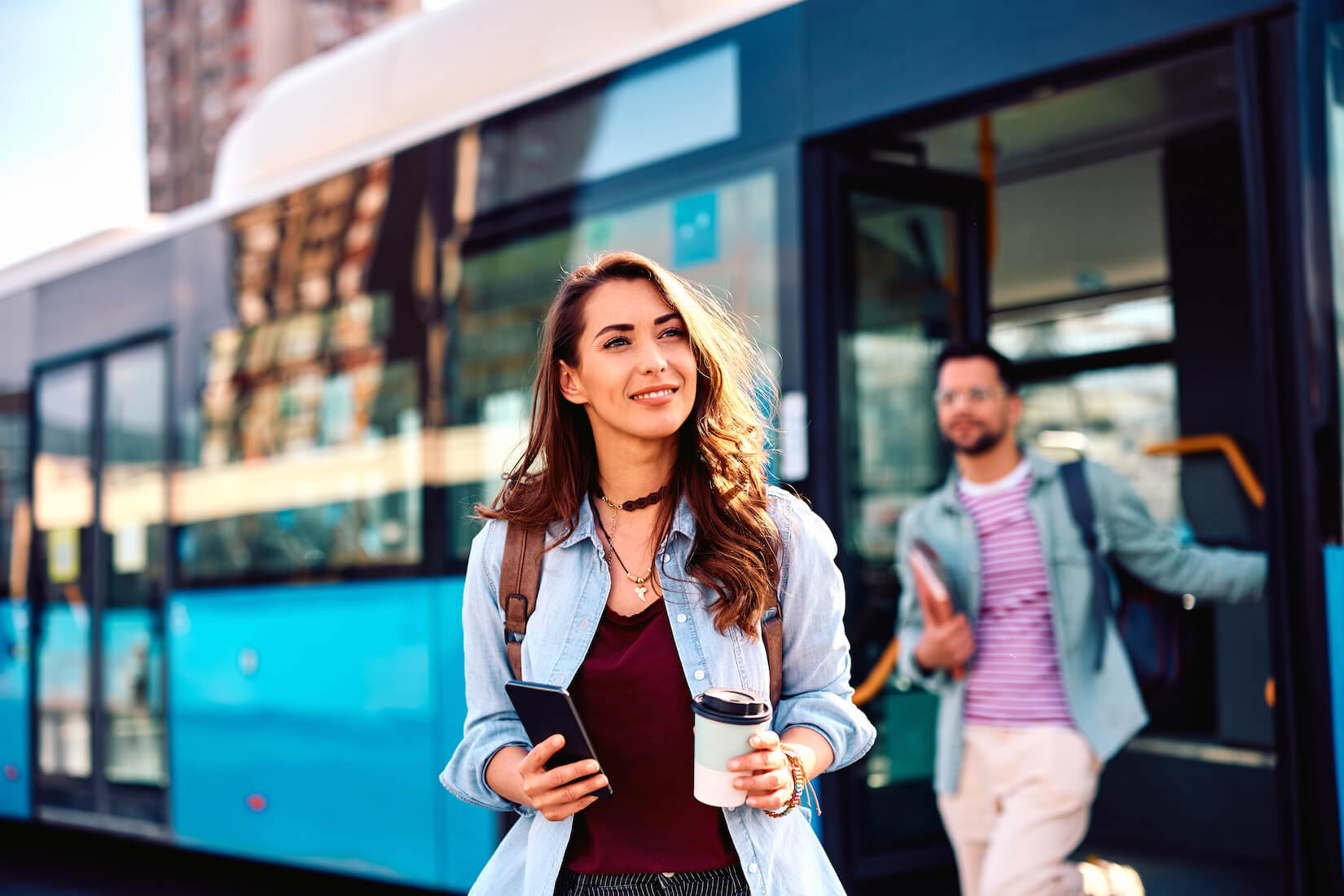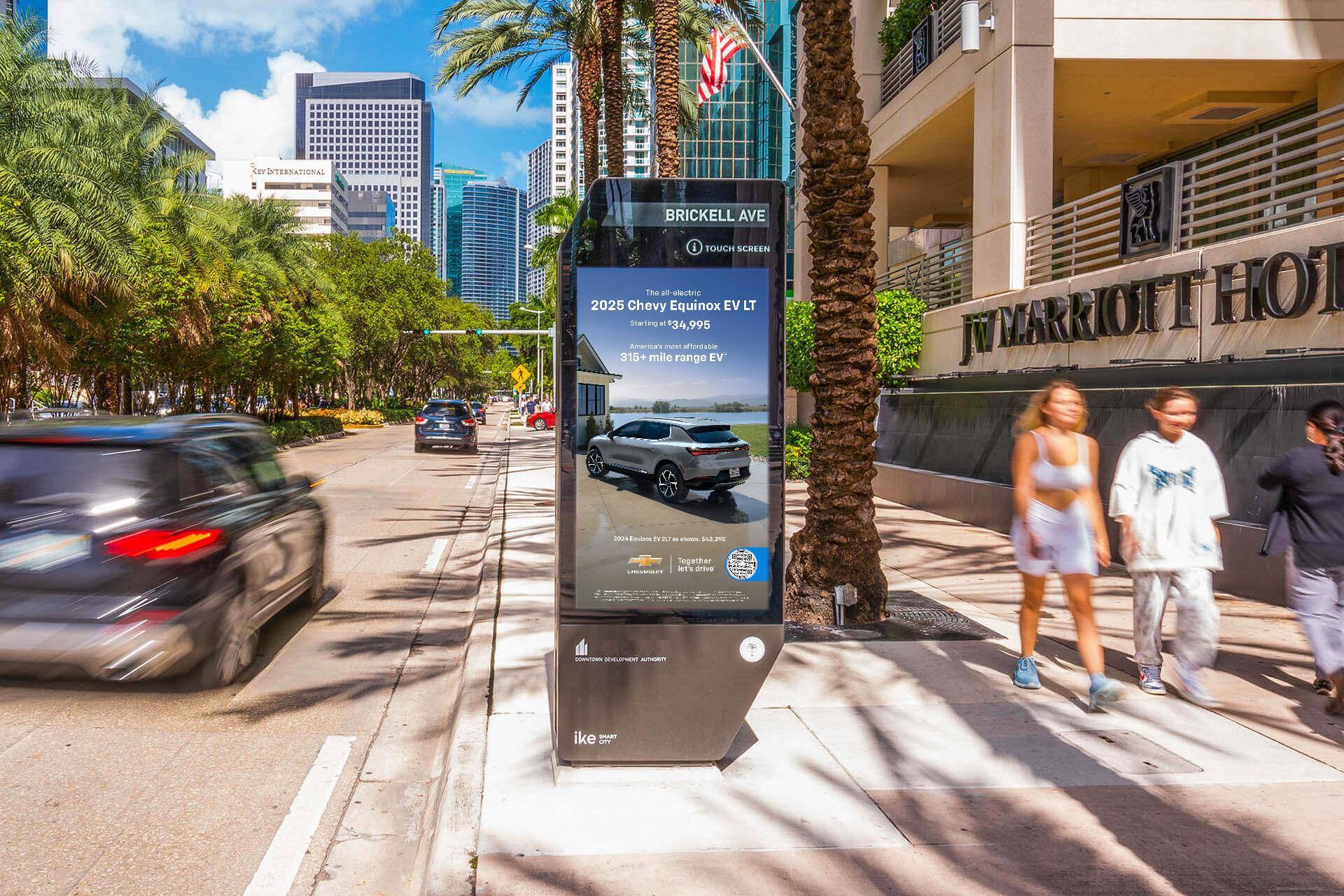
Strategies for capturing attention in motion through smart, scalable OOH
From morning commutes and mid-day errands to evening outings, people spend a significant portion of their day on the move. That’s where transit advertising comes in—bringing brands into everyday routines and capturing attention at key decision-making moments.
Transit is one of the most versatile and high-frequency formats in out-of-home (OOH) advertising. Whether it’s a full bus wrap cruising through downtown, digital signage inside a train station or a street-level shelter along a well-trafficked route, transit placements allow advertisers to connect with urban audiences in motion—consistently and contextually.
At Vistar Media, we help brands leverage the power of programmatic transit advertising to scale campaigns across cities, connect with real-world behaviors and drive measurable outcomes with some of the best OOH ads. Here's how you can reach today’s mobile consumer using transit-based OOH.
What is transit advertising?
Transit advertising includes any OOH placement that appears on or around modes of public transportation. This covers a wide range of formats, including:
- Exterior wraps and panels on buses, streetcars or trains
- Interior screens or posters inside vehicles
- Station-based signage such as digital screens, lightboxes and stair risers
- Street-level inventory like bus shelters, benches and kiosks
- Taxi tops and airport shuttles
What makes transit placements so valuable is their daily exposure and high dwell times. Whether someone is waiting at a stop, riding to work or navigating a terminal, they’re in a focused and high-trafficked environment, making it an ideal space to engage.
Why transit advertising works
Transit placements offer several built-in advantages that make them especially effective:
1. High-frequency exposure
Transit ads live in front of consistent daily audiences—commuters, shoppers, travelers and students. This repetition builds familiarity and improves recall, especially when paired with strategic messaging or retargeting tactics.
2. Urban and hyper-local reach
Transit advertising lets brands show up in dense population zones, making it a powerful tool for local relevance at national scale. You can place creative near specific venues, retail locations or areas with high foot traffic.
3. Real-world visibility
Unlike digital ads that can be skipped, scrolled past or blocked, transit placements are impossible to ignore. They stand out in the physical landscape, offering a persistent presence in consumers’ daily lives. Real-world visibility in their daily routines makes the brand a part of that routine without feeling intrusive, the way pop-up or sudden streaming commercials can often feel.
Using programmatic DOOH to optimize transit campaigns
Programmatic digital out-of-home (DOOH) allows advertisers to buy transit inventory the same way they buy digital media—using audience targeting, real-time optimization and centralized reporting.
With Vistar Media’s platform, brands can:
- Target audiences based on behavior, location or context
- Adapt creative by time of day or day of week
- Rotate different messages across placements
- Measure campaign performance with precision
This adds a layer of intelligence to transit advertising, making it more flexible, measurable and scalable than traditional OOH buying.
Smart strategies for transit-based OOH
To make the most of transit placements, consider these proven strategies:
1. Map the consumer journey
Think about where your audience goes and when. Are they commuting to offices in the morning? Shopping midday? Heading to events in the evening?
Use this insight to guide where and when your ads appear—aligning placements with real-world behavior.
2. Diversify formats for full-day exposure
Combining station screens, vehicle exteriors and shelter ads can help keep your message top-of-mind throughout the day. Each format brings different visibility and engagement dynamics.
3. Tailor messaging to context
Transit environments are ripe for creative customization. A humorous line in a ride-share zone, a health-focused message outside a gym or a retail Call To Action near a shopping hub can all drive stronger resonance.
With programmatic capabilities, you can even adjust creative based on weather, time of day or audience segment.
4. Pair with mobile for cross-channel engagement
Transit DOOH is a powerful driver of mobile engagement. Use QR codes, geofencing or device ID passback to reach the same user on their phone after exposure.
This can lead to:
- Store visits
- App installs
- Online research
- Product purchases
It also enables deeper analytics, helping you track and optimize for performance.
Examples of effective transit placements
Transit-based campaigns are ideal for a wide range of verticals, including:
- Retail: Promote store openings or product launches near shopping districts or on commuter routes
- Entertainment: Build anticipation for concerts, movies or festivals with high-impact visuals in urban centers
- QSR & food delivery: Use shelter and kiosk ads near restaurants to drive foot traffic or app engagement
- Travel & hospitality: Reach vacation planners at airports, train stations or ride-share zones
- Automotive: Target in-market drivers near dealerships, service centers or lifestyle-specific locations
Whether you're reinforcing brand awareness or driving real-world action, transit placements offer the flexibility and proximity to do both.
Creative best practices for transit environments
Because transit ads are often seen while people are moving, your creative needs to be:
- Clear and concise. Focus on one message
- Bold and legible. Use large type and strong contrast
- Visually striking. Catch attention in a busy environment
- Context-aware. Use location or time-relevant creative to boost relevance
For digital formats, consider rotating different creatives throughout the day or adapting your visuals based on triggers such as temperature, location or local events.
Measuring success with transit DOOH
Transit campaigns can be tracked using a variety of performance indicators, including:
- Impressions and reach
- Brand lift (awareness, consideration, intent)
- Foot traffic to retail locations
- Mobile engagement or online actions post-exposure
Vistar Media supports robust measurement solutions that help brands connect DOOH exposure to real outcomes, providing transparency and accountability across every stage of the campaign.
Transit keeps your brand moving
Transit advertising puts your message in motion—right alongside your audience’s daily journey. With programmatic DOOH, advertisers now have the tools to create transit campaigns that are smarter, more strategic, and more measurable than ever.
Whether you’re scaling nationally or engaging locally, transit gives you the visibility, flexibility and relevance to reach people where it counts. Want to launch a high-impact transit campaign? Contact Vistar Media to see how we can help you activate smarter out-of-home strategies that move with your audience.



